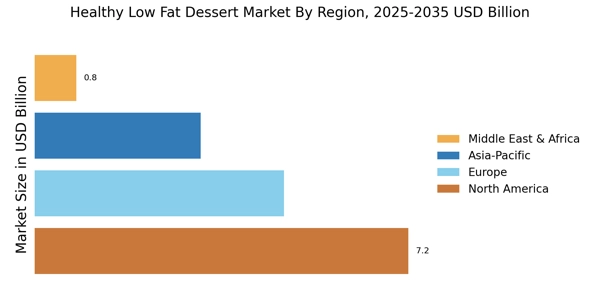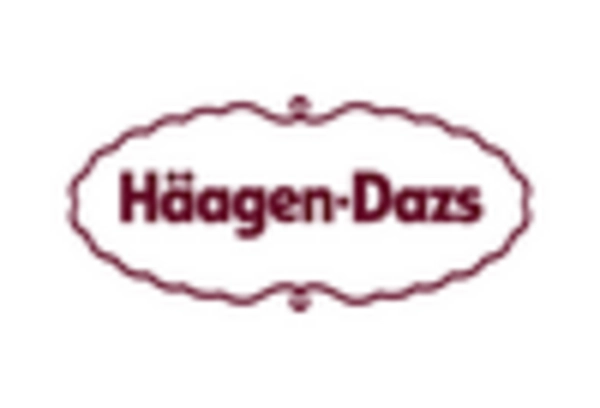The Healthy Low Fat Dessert Market is currently characterized by a dynamic competitive landscape, driven by increasing consumer demand for healthier options and innovative product offerings. Major players such as Nestlé (CH), Danone (FR), and Unilever (GB) are strategically positioning themselves through a combination of product innovation, regional expansion, and sustainability initiatives. Nestlé (CH) has focused on enhancing its portfolio with low-calorie options, while Danone (FR) emphasizes its commitment to health and wellness through its Oikos brand, which has seen a surge in popularity due to its high protein content and low fat. Unilever (GB), on the other hand, is leveraging its extensive distribution network to introduce new flavors and formats, thereby enhancing its market presence and catering to diverse consumer preferences.
The market structure appears moderately fragmented, with a mix of established brands and emerging players. Key tactics employed by these companies include localizing manufacturing to reduce costs and optimize supply chains, which is particularly crucial in a market where freshness and quality are paramount. The collective influence of these major players shapes the competitive environment, as they continuously adapt to consumer trends and preferences, thereby driving innovation and market growth.
In August 2025, General Mills (US) announced the launch of a new line of low-fat frozen desserts aimed at health-conscious consumers. This strategic move is significant as it not only expands their product range but also aligns with the growing trend of healthier indulgence, potentially capturing a larger market share. The introduction of these products is expected to resonate well with consumers seeking guilt-free dessert options, thereby reinforcing General Mills' position in the market.
In September 2025, Yasso (US) unveiled a partnership with a leading fitness app to promote its low-fat frozen Greek yogurt bars. This collaboration is strategically important as it taps into the health and wellness community, encouraging consumers to associate Yasso with an active lifestyle. By leveraging digital platforms, Yasso aims to enhance brand visibility and engage with a broader audience, which could lead to increased sales and brand loyalty.
In October 2025, Kraft Heinz (US) announced a sustainability initiative aimed at reducing sugar content across its dessert portfolio, including low-fat options. This initiative reflects a growing consumer preference for healthier ingredients and aligns with broader industry trends towards transparency and health-consciousness. By prioritizing sustainability, Kraft Heinz is likely to strengthen its brand reputation and appeal to environmentally aware consumers, which is becoming increasingly important in today's market.
As of October 2025, current trends in the Healthy Low Fat Dessert Market indicate a strong emphasis on digitalization, sustainability, and the integration of artificial intelligence in product development and marketing strategies. Strategic alliances are increasingly shaping the competitive landscape, allowing companies to pool resources and expertise to innovate more effectively. Looking ahead, competitive differentiation is expected to evolve, with a notable shift from price-based competition towards innovation, technology, and supply chain reliability, as companies strive to meet the ever-changing demands of health-conscious consumers.


















Leave a Comment